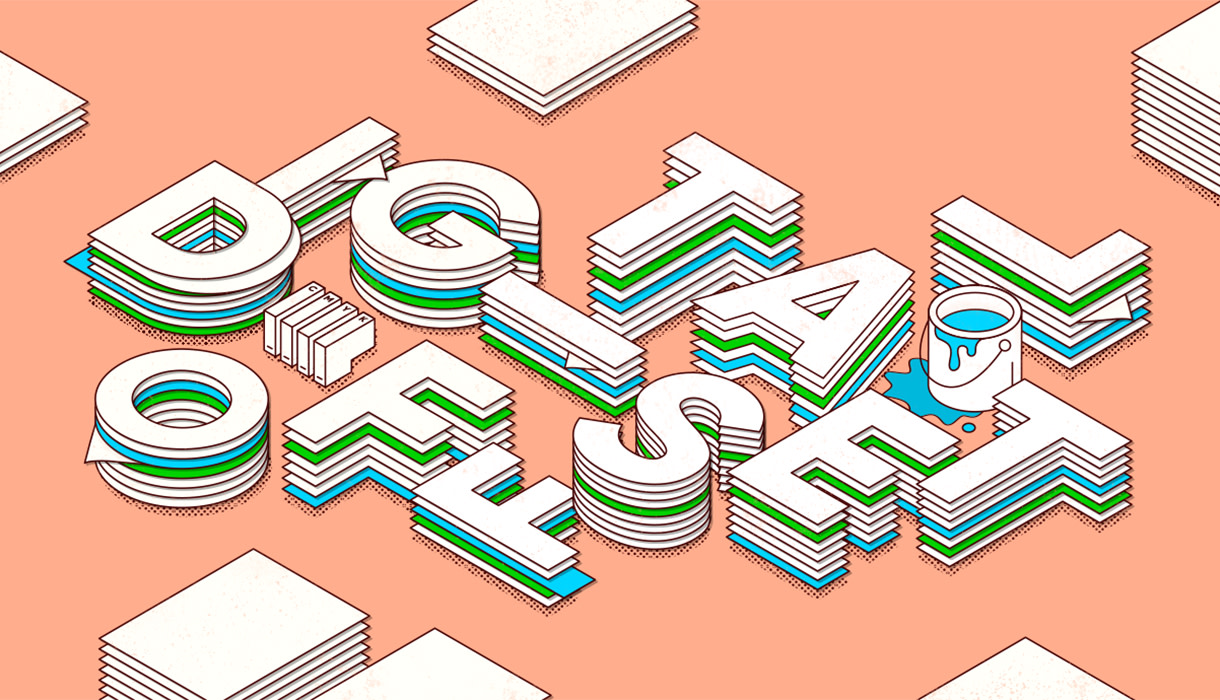LEARN
Why Stickers Should Be a Part of Your Merch Plan
Merch is a key ingredient in any creator’s business, and personalized, branded stickers are the best way to make that personal connection. Here’s why.
Sep 29, 2021
•
6 min read
4 min read
•
Team Jukebox
•
Sep 21, 2021

As a designer who gets their work commercially printed, you are most likely aware of the range of options you have. The possibilities are endless, from specialty printing on metal or plastic for promotional material to the fine detail of letterpress printing. No matter what you are printing, you'll always have two primary print options: digital printing or traditional offset-press printing.
Even though digital and offset printing are entirely different, they both have their place and advantages and disadvantages. For most designers, digital printing is the more comfortable option as it has the familiarity of a laser or inkjet printer that they have in their studio. Unlike digital printing, offset printing can seem like a complicated, fussy, and old-fashioned process. Because of this, many designers avoid this type of printing, ignoring the incredible advantages that come along with it. The perceived complication, unknown, and lack of understanding when preparing project files for offset printing keeps designers from the quality and financial benefits.
To help you get a better understanding of both types of printing, let’s unpack both digital and offset printing and determine which one is best for your project.
Digital printing is a quickly evolving print technology that is improving continuously. The print process used by commercial printers is almost identical to your office printer, only on a larger scale and with enhanced resolution. Even though a more straightforward process than offset printing, digital printing can still seem complicated to a novice. There are two types of digital printing technology:
Other digital printing processes are available at the commercial level, like dye sublimation printing and silk screening, but it is not used as frequently as the above two.

Even though digital and offset printing are entirely different, they both have their place and advantages and disadvantages
Offset printing is a more complicated and involved process that requires a significant setup for each print job. This type of printing is a mature, sophisticated process that almost always significantly exceeds even the best digital printing results. The process involves laying down ink using thin sheets of plastic or aluminum called plates. Each plate is created for a specific color to be printed to create a precise final print.
Due to its technical aspect, offset printing needs to be done by trained operators using equipment far beyond what a digital office or home printer can imagine. For designers, using offset printing means understanding and accommodating the process by ensuring their print layout can be translated into a plate-based press.
In terms of cost, offset printing is more expensive as it involves a setup cost for pre-flighting, plate preparation, press setup, and ink loading for spot colorwork. Because of this, you simply can't get a few printed pages from an offset job without incurring all those initial costs. Once the setup is complete, the cost of offset printing subsides, and 1000 copies can cost only 5-10% more than 500 copies.

Both digital printing and offset printing have their advantages and limitations. Here's an easy to read pro and cons list to help you decide what is the best print option for your project:

Digital printing is a valuable tool for offices space and for designers' toolkits, but is best used for short-run production and when a speedy turnaround is needed. Offset printing is the better choice for everything else—quality, larger print sizes, low page cost, and much lower price for high quantities.
Merch is a key ingredient in any creator’s business, and personalized, branded stickers are the best way to make that personal connection. Here’s why.
Sep 29, 2021
•
6 min read
With a rich history that spans over a hundred years, today, magnets are used for more than just sticking mail, pamphlets, or kid's artwork on your fridge. These cost-effective tools can be customized to create unique, impactful, and creative mini billboards.
Sep 17, 2021
•
4 min read
Not to worry. Enter the email address you used when you joined and we’ll send you instructions to reset your password.
We've sent you an email with a link to reset your password.
Check your spam and promotions folder if it doesn’t appear in your main inbox.
Didn’t receive the email?

